DRC to WMAConvert DRC to WMA, DRC to WMA Converter |
 |
| Home | Getting Started | Download | Buy Now! | Screen Shots | FAQ | Support | Contact |
DRC to WMA Converter converts DRC to WMA. The software is an ALL-IN-ONE audio converter that supports more than 100 audio and video files, and supports batch conversion. DRC to WMA Converter is easy to use and, is full compatible with 32-bit and 64-bit Vista and Windows 7.
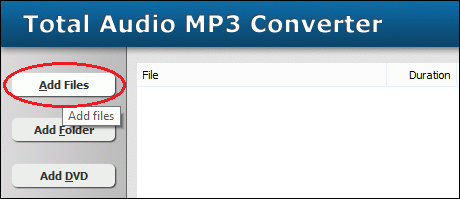 Click "Add Files" to choose DRC files and add them to conversion list. 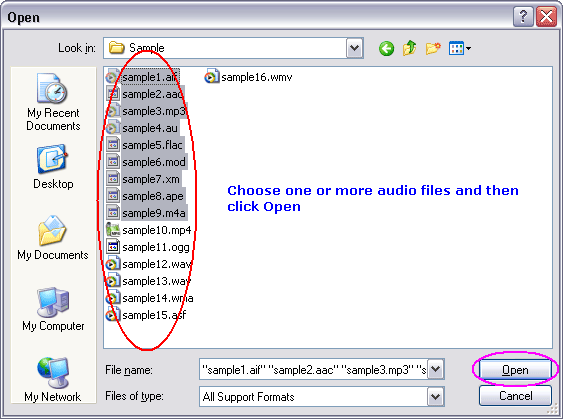 Choose one or more DRC file(s) you want to convert and then click "Open". 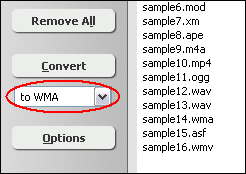 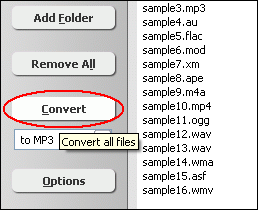 Click "Convert" to convert DRC files to WMA format. 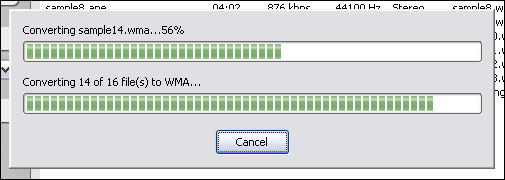 The software is converting DRC files to WMA format. 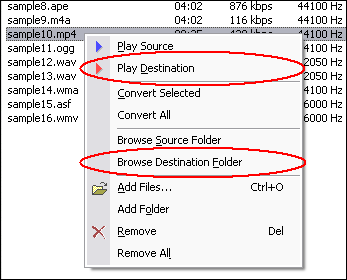 Right-click converted WMA file and choose "Play Destination" to play the WMA file, choose "Browse Destination Folder" to open Windows Explorer to browse the outputted WMA file. What is DRC? The specification was finalised on 21 January 2008, and further developments will only be bug fixes and constraints. In September of that year version 1.0.0 of the reference implementation was released which corresponds to an intra-frame only subset known as Dirac Pro, which has been proposed to the SMPTE for standardisation as VC-2. Version 2.2.3 of the full Dirac specification, including motion compensation and inter-frame coding, was issued a few days later. Dirac Pro was used internally by the BBC to transmit HDTV pictures at the Beijing Olympics in 2008. The format implementations are named in honour of the theoretical physicists Paul Dirac and Erwin Schrodinger, who shared the 1933 Nobel Prize in physics. Dirac supports resolutions up to HDTV (1920x1080) and greater and is claimed to provide significant savings in data rate and improvements in quality over video compression formats such as MPEG-2 Part 2, MPEG-4 Part 2 and its competitors, e.g. Theora, and WMV. Dirac's implementers make the preliminary claim of "a two-fold reduction in bit rate over MPEG-2 for high definition video", which makes it comparable to the latest generation standards such as H.264/MPEG-4 AVC and VC-1. Dirac supports both constant bit rate and variable bit rate operation. When the low delay syntax is used, the bit rate will be constant for each area (Dirac slice) in a picture to ensure constant latency. Dirac supports lossy and lossless compression modes. Dirac employs wavelet compression, instead of the discrete cosine transforms used in most older compression formats. Dirac is one of several projects attempting to apply wavelets to video compression. Others include Rududu, Snow, RedCode and Tarkin. Wavelet compression is also used in the JPEG 2000 and PGF compression standards for photographic images. Dirac can be used in various container formats (e.g., AVI, Ogg, MKV). It was registered for the use in container formats based on the ISO base media file format (MPEG-4 Part 12; e.g., MP4). It was also registered for use in MPEG-2 transport stream. What is WMA? A WMA file is in most circumstances encapsulated, or contained, in the Advanced Systems Format (ASF) container format, featuring a single audio track in one of following codecs: WMA, WMA Pro, WMA Lossless, or WMA Voice. These codecs are technically distinct and mutually incompatible. The ASF container format specifies how metadata about the file is to be encoded, similar to the ID3 tags used by MP3 files. Metadata may include song name, track number, artist name, and also audio normalization values. DRC to WMA Related Topics: OGX to WMA, NSV to WMA, WV to WMA, RAM to WMA, FLAC to WMA, EVO to WMA, DRC to WMA, DXA to WMA, MPP to WMA, ROQ to WMA, MPG to WMA, W64 to WMA, MPGA to WMA, M4B to WMA, ALAW to WMA, ASF to WMA, MIDI to WMA, H263 to WMA, QT to WMA, AIFF to WMA, MOD to WMA, SMK to WMA, WAV to WMA, MXF to WMA, MP4 to WMA, MP3 to WMA, MPC to WMA, M1V to WMA, VQF to WMA, AVI to WMA, ALAC to WMA, RMI to WMA, SDP to WMA, DVD to WMA, M2A to WMA, MTV to WMA, KAR to WMA, STR to WMA, VFW to WMA, THD to WMA
|
| Home | Getting Started | Download | Buy Now! | Screen Shots | FAQ | Support | Contact | Links |
| Copyright © 2007-2014 Hoo Technologies All rights reserved. Privacy Policy |